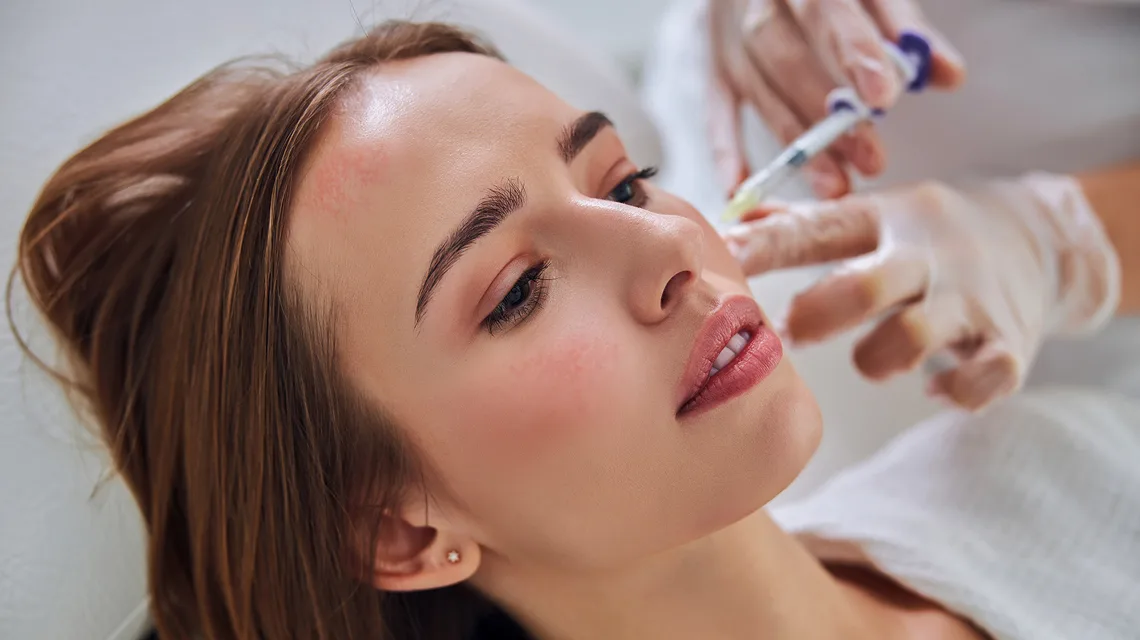Дерматологични лечения
Stem cell technology stands out as one of the most remarkable advancements in modern medicine. As a cornerstone of regenerative medicine, stem cells possess the potential to repair damaged tissues in the body. This potential has garnered significant interest, particularly in the field of dermatology, which focuses on skin health and aesthetic treatments.

What Are Stem Cells?
Stem cells are specialized cells with the ability to transform into different cell types. These cells are mainly categorized into three groups: embryonic stem cells, adult stem cells, and induced pluripotent stem cells. In dermatological treatments, the most commonly used are adult stem cells, particularly mesenchymal stem cells derived from adipose (fat) tissue.
Treatments of Stem Cells in Dermatology
Skin Rejuvenation and Anti-Aging Treatments: Stem cells stimulate fibroblast activity, which triggers the production of collagen and elastin. This process contributes to skin tightening, improved elasticity, and the reduction of fine wrinkles. Stem cell treatments are widely preferred for reducing signs of aging and rejuvenating skin texture.
Wound and Burn Treatment: In skin lesions such as chronic wounds, diabetic ulcers, and burns, stem cell therapy plays a vital role in accelerating the healing process. Stem cells support cellular regeneration in the damaged area, restoring tissue integrity.
Hair Loss and Androgenetic Alopecia: Stem cell treatments developed against hair loss aim to reactivate hair follicles. Especially when combined with PRP (Platelet-Rich Plasma), stem cell treatments can support stronger and healthier hair growth.
Acne Scars and Skin Blemishes: Stem cell-based treatments offer promising results in reducing post-acne scar tissue and skin tone irregularities. These treatments, which promote cellular renewal, provide a smoother and more even skin appearance.
Vitiligo and Other Pigmentation Disorders: The melanin-producing cell support effect of stem cells opens new treatment possibilities for pigmentation diseases such as vitiligo. While clinical studies in this area are ongoing, stem cell-based treatments are showing promise.
Treatment Methods
Topical Treatments: Creams and serums containing stem cell extracts or derivatives.
Intradermal Injections: Directly injected stem cell suspensions beneath the skin.
Combination with Microneedling: Enhancing the penetration of stem cells into deeper skin layers through micro-injuries created on the skin surface.
Safety and Efficacy
Stem cell treatments used in dermatology are typically performed using autologous (patient-derived) stem cells, minimizing immune response. While no serious side effects have been observed in clinical studies, it is crucial that all treatments are carried out under professional supervision.
Conclusion
Stem cell treatments are widely applied in dermatology for a range of purposes, from skin rejuvenation to wound healing, hair loss treatment, and pigmentation correction. This innovative approach supports the skin’s natural repair capacity, offering a healthier and more aesthetic appearance. With ongoing scientific advancements, stem cell treatments are expected to become even more widespread and effective in the future.














